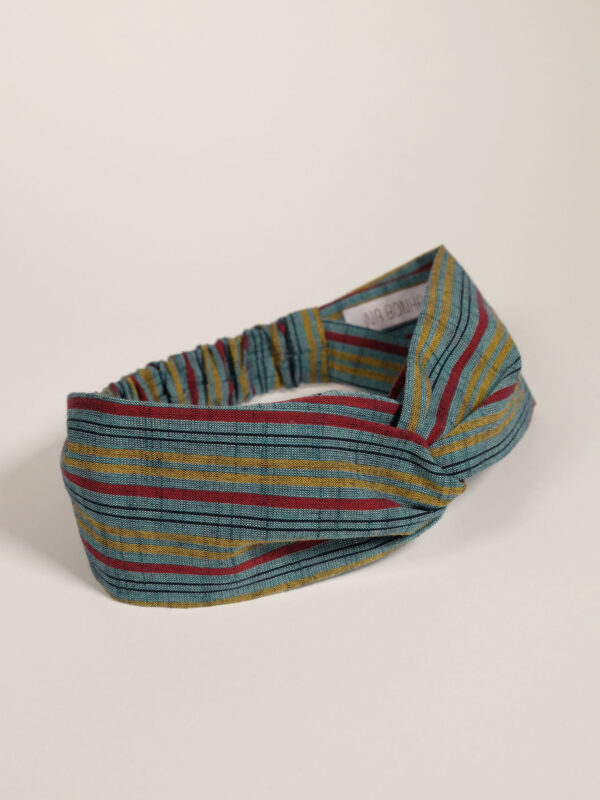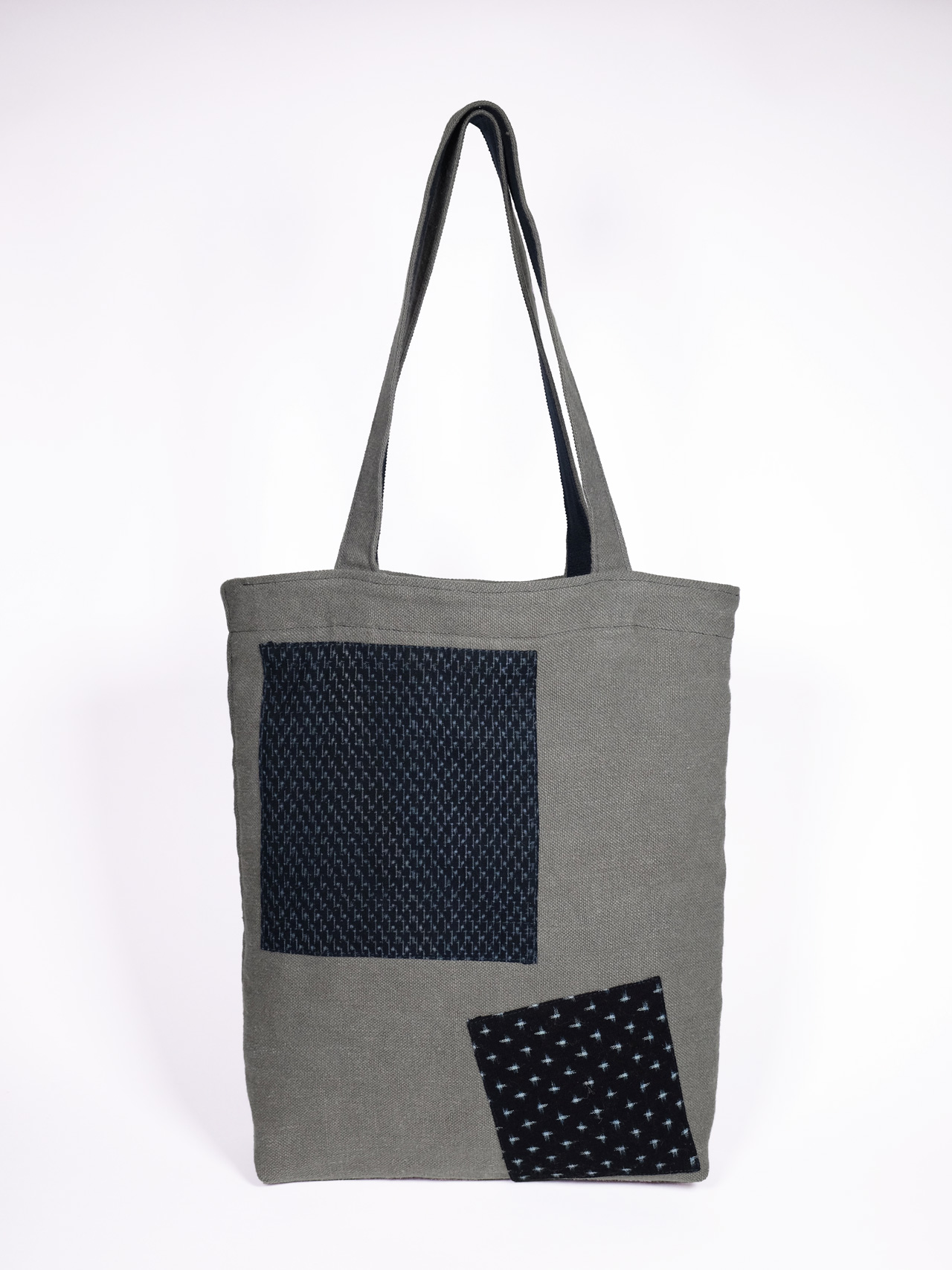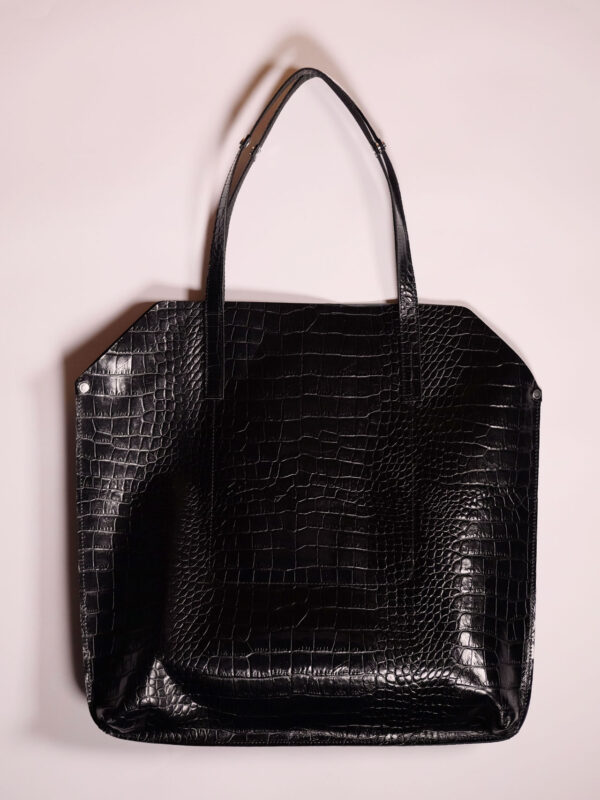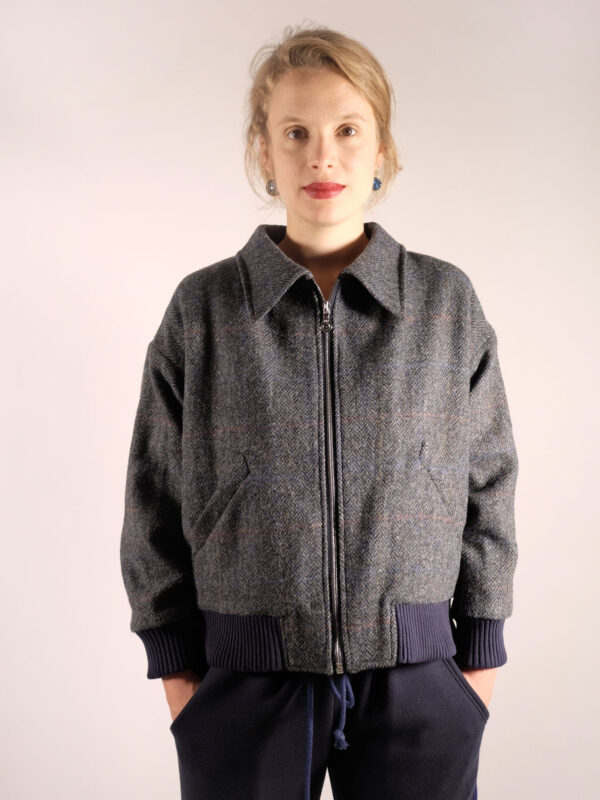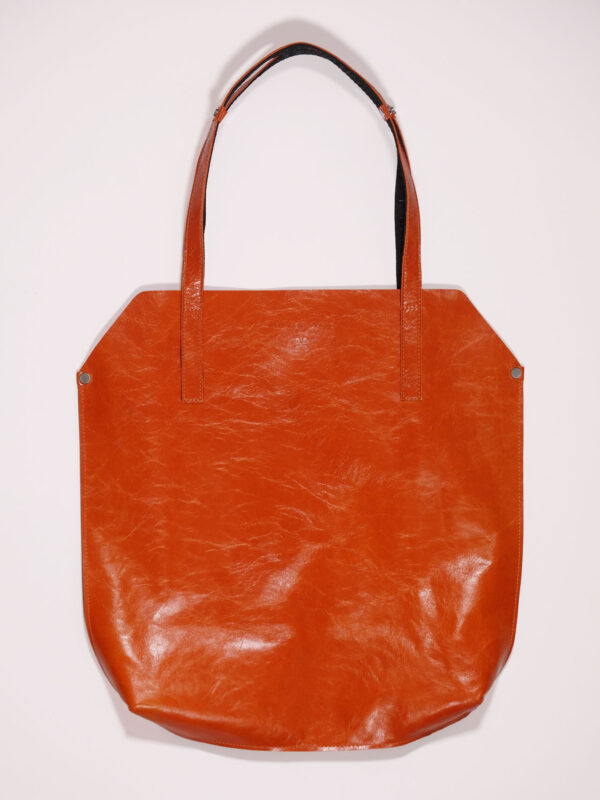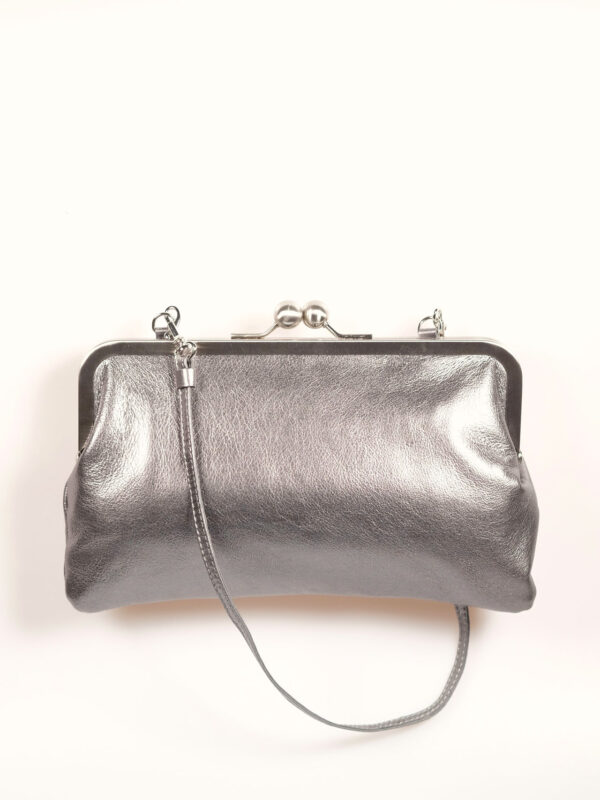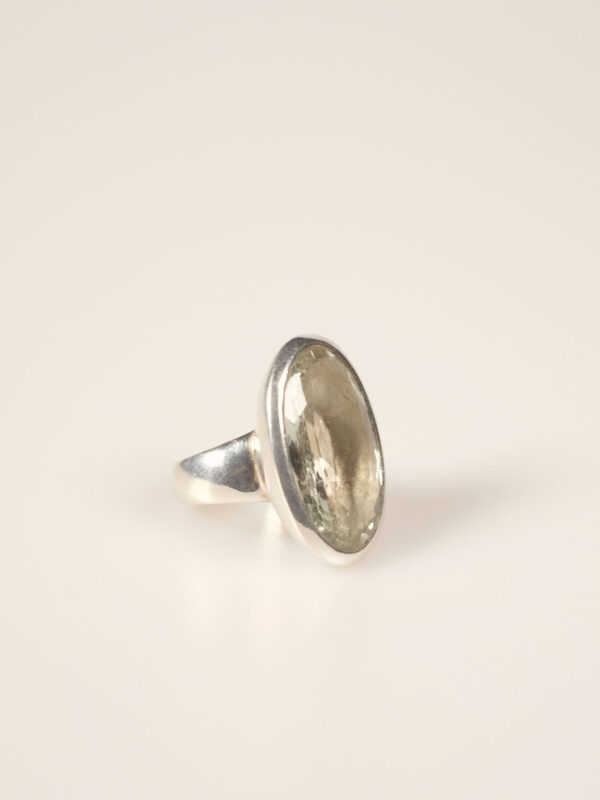For the purist geometric shapes of this tote bag collection, we were inspired by the Russian avant-garde artist Kazimir Malevich.
The bags are unlined and have a stainless steel carabiner clasp. An inside pocket offers space for a wallet, mobile phone or keys.
The wide shoulder straps are reinforced with high-quality rep ribbons and the inner seams are serged with them.
The stonewashed hemp canvas and the antique kimono fabric give the bag a beautiful vintage look and a very soft, pleasant feel.
Material: 100 % hemp, fabric weight 550 g / sqm
Application 100 % cotton
Dimensions: width 35 cm, height 40 cm, depth 7 cm
Length shoulder strap 59 cm
Care: Hand wash or gentle cycle 30°C, wash with similar colours!
Background information on our antique kimono fabrics:
Kurume-gasuri is a woven cotton fabric from Chikugo region, Fukuoka. Using traditional techniques, the threads are tie-dyed in indigo and woven by hand on the loom.
History
One day a twelve year old girl named Den Inoue from Kurume noticed that the repeated washing of an indigo-dyed kimono decolorizes, causing white faded dots in the fabric. Her curiosity led to detangling the threads to examine faded dots and she was inspired to dye new threads the same way as the detangled threads. Her fabric was called kasuri and welcomed to the market. Technique development such as the addition of pictorial patterns led to gradual increase in production and number of her disciples. By the time she was 38 in 1827, she had over 1000 disciples, 400 of which were sprinkled across the country, promulgating Kurume traditional resist-dyed textiles nationwide and establishing this textile’s place in the industry.
With its indigo-blue color and delicate pattern Kurume Gasuri has a pleasant appearance. It is renowned as one of the three most famous traditional resist-dyed textiles along with Bingo gasuri and Iyo gasuri. Because Kasuri fabrics are extremely durable and even improve over the time, they are ideal for everyday use and will be beloved forever.
Kimono fabrics were worn among the common people, but the production started taking a downturn with the switch to Western clothes. Chemical dyes and machine-woven textiles took over the main production. Some say the time of Kasuri fabrics has passed, but there is an effort to reinvigorate the industry by encouraging the artisans to also make modern items for everyday.
